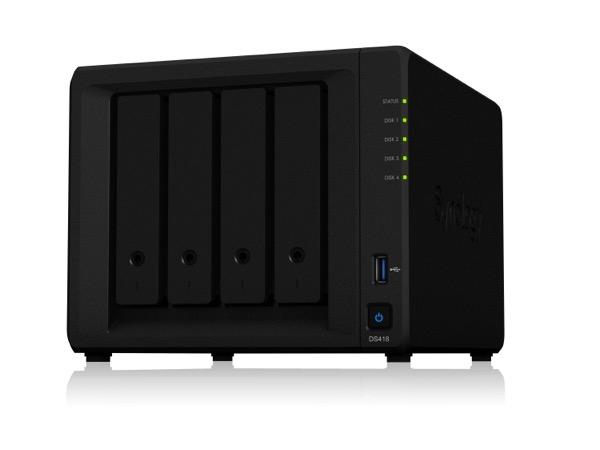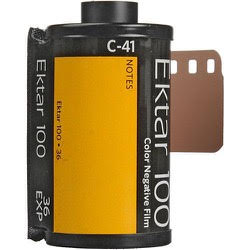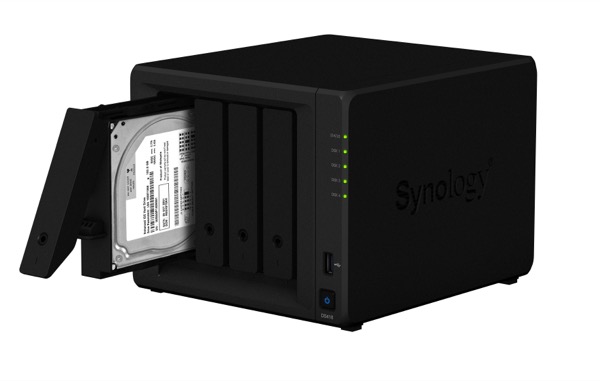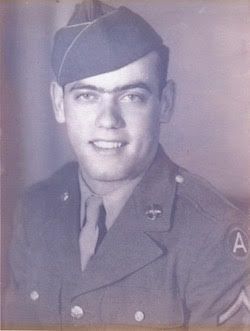Preserving Precious Memories with Synology’s DS418 DiskStation

I know because my 92-year-old father passed away a little over a week ago—depriving the world of one more quiet, noble WWII vet. I, along with my sisters and our collective children, went through many hundreds of old photographs — some dating back to the late 1930s — scanning the best ones as fast as we could. (Funerals, it turns out, are the ultimate deadline.) Some of the images we found were funny, such as the one taken at my dad’s 80th birthday party showing Dad with a vexed look on his face as his four children are yucking it up behind him. Others triggered an unanticipated avalanche of emotions, as did the photo of Mom and Dad dancing at their 25th wedding anniversary, not long before my grandmother (my dad’s mom) died from a heart attack at a table not far from the dance floor. My mom died of cancer 24 years ago, so that photo was a three-in-one kicker in the emotional gut. (It’s funny how looking at photos of dead relatives whom you never met, like my great-grandmother, for instance, don’t affect you as do pictures of those you knew and loved who have passed on, as is the case with my older brother who passed away ten years ago.) Fortunately for me, one of my nieces took on the responsibility of editing and combining the collected images in one incredibly beautiful and moving slide show that ran on a couple of monitors during the visitation at the funeral home.
 For over ten years, when I and my siblings were kids, my dad took pictures of us on vacation and him on hunting trips using 35mm slide film. I now have over twelve carousels of those slides to scan and send digital copies to my siblings. We all have slews of photographic prints to scan and distribute, as well. We’ll probably only look at them a couple of times during the remainder of our lifetimes — and other than our children, no one else will give a crap after we’re all dead — but at least we’ll have them at easy access when we do want (or need) to look at them.
For over ten years, when I and my siblings were kids, my dad took pictures of us on vacation and him on hunting trips using 35mm slide film. I now have over twelve carousels of those slides to scan and send digital copies to my siblings. We all have slews of photographic prints to scan and distribute, as well. We’ll probably only look at them a couple of times during the remainder of our lifetimes — and other than our children, no one else will give a crap after we’re all dead — but at least we’ll have them at easy access when we do want (or need) to look at them.
Life goes on, of course. Over the weekend, I videoed my daughter as she played piano in a state music competition. I filmed the performance in 1080p using my iPhone, and the resulting 12 minutes of video consumed 1.55 GB of storage. As the proud dad of a young lady who performs a lot, I’ve accumulated many more GBs of video over the last 17 years. I also have hours and hours of video taken of my older boys while they were growing up — but those movies are still locked away on dozens of Mini DV tapes that I have yet to transfer to a hard drive. Aside from having the spare time to transfer and organize all of these old and new photos and videos, I’m rapidly running out of hard drive space. (I haven’t even mentioned the over 240 GB of digital still images already on a hard drive.)
I currently have two NAS (Network Attached Storage) drives: a standalone Synology BC214se (with two 3 TB drives in a RAID array) and a rack-mounted Synology RS815 (with four 4 TB drives). Unlike the hard drive on my computer, these two NAS devices aren’t filled with lots of stupid schlock that accumulates until I to purge some of it in order to free up space on the internal hard drive. The contents mainly consist of personal digital media (images, movies, audio) plus Time Machine backups for two Mac computers in the house. You’d think I’d be looking for things to store on these NAS devices; and, yet, the BC214se storage meter reads at 99% used, while the RS815 says it’s at 93% of capacity.
Over the last month-and-a-half, Synology has introduced several new NAS models, some of which are “designed for small and medium-sized businesses and IT enthusiasts.” I certainly don’t fit in any of those potential-user categories. Of the remaining introductions, the Synology DiskStation DS418 is the most interesting to me because the “DS418 is a high-performance and versatile four-bay NAS, specifically designed for offices and home users to effectively manage, protect, and share data.” (To “manage, protect, and share data” sounds like a superhero’s slogan.) There are a lot of stats I could throw at you, but they’re really more appropriate for “IT enthusiasts.” (I’d make fun of that moniker, but I have a nephew who owns and operates an IT company. He’s serious about IT, but he certainly doesn’t fit the popular image of the IT nerd.) Suffice it to say that this is one impressive piece of hardware, especially for the price.
The DS418 is a standalone, 4-bay NAS that’s very digital media savvy. It has a 64-bit quad-core 1.4GHz processor, 2 GB DDR4 memory, and is capable of 10-bit 4K H.265 video transcoding (to 1080p or lower) on the fly. That last bit is especially important with regard to all the personal home videos I’ve been accumulating — and will continue to accumulate in 4K from here on out. Here’s how Synology describes it:
You can organize a personal digital video library with comprehensive media information, and stream 4K Ultra HD movies and films to various devices such as computers, smartphones, media players, and TVs. If your device is not capable of 4K video playback, DS418 provides online 4K video transcoding to 1080p or lower resolutions for smoother and time-saving video watching experience.
In other words, I won’t need to have everyone crowd around my laptop in order to see the images or videos I’ve stored on the DS418. The DS418 can stream directly to a connected phone, set-top box, or smart TV, and it’ll adjust the resolution of the stream based on the device at the other end of the stream. By the way, Synology has a number of mobile apps that will allow mobile devices to stream from the DS418 (or other Synology DiskStations) anywhere there’s access to the internet (as long as the device is registered as a user in the DS418’s configuration).
There’s one additional spec that really caught my eye. Synology says the DS418 has “over 40TB raw single volume capacity.” Now, I’m not an expert, mind you, but 40TB ought to ease my storage issues for a while.

For those who aren’t all that familiar with buying NAS devices, it’s important to note that they can be sold as empty enclosures without any hard drives installed (sometimes referred to as a “Diskless System”) or with hard drives installed. If you buy the enclosure only, you can decide how much you want to spend to get the amount of storage space you need. (Memo to self: there’s never enough storage space.) The Synology DS418, for example, sells for $369. Coincidentally, that’s close to the starting price of a quality 10TB desktop drive. (For our purposes here, let’s say a 10TB drive will cost you $350.) Since you’ll need four of those 10 GB drives to install in the DS418 in order to max out the DS481’s capabilities, the total cost of the system will net to a little under $1,800.
Depending upon your outlook on life and, more importantly, your income, $1,800 is either an impulse purchase price or totally out of reach. (I fall somewhere in-between, close to the “totally out of reach” group.) Here’s another cost coincidence: according to the FTC, the average cost of a casket in a “traditional” full-service funeral is a bit more than $2,000 — and its only purpose is to sit six feet underground.
My dad’s estate had enough money to pay for the funeral and a $2,000 casket. I’d rather put the money into a NAS with 40TB of storage and have my kids bury me in a cardboard box. (Actually, I’ve left instructions that I want my kids to put my body on a wooden boat, set it afire, and let it float on the lake by our house until it's nothing but ashes. It’s not good for the planet, I know, but I think it’s a stylish way to go out.)
Looking back on this post, I realize it's kind of morbid, kind of technical, and then kind of irreverent. There’s a certain attitude that comes — at least for me — when your remaining parent dies. It brings home the fact that we’re all mortal, and any one of us might not be here tomorrow. So, basically, if you’ve been offended by the content so far, I don’t really give a crap about it. Life and death mix every day, and somehow, we all go on. Ideally, technology can be used to help us keep our memories available anytime we’d like to see them. I don’t know if 40TB is enough to store an entire life, but at least it’s a good start.
 By the way, for those who are interested, my dad had a great run. His mind and heart were solid until the end. It was his body that just finally wore out over the last five years of his life. He grew up in a house without plumbing or electricity, joined the Army to fight in WWII rather than graduate from high school, landed on a beach in Normandy two days after D-Day, froze in the coldest winter of his life in the town of Liege during the Battle of the Bulge, and was on a boat ready to ship out to the Philippines when the atom bomb was dropped on Hiroshima. He helped raise four kids, worked his butt off, and then watched as the family grew to a total of 13 grandchildren and (so far) nearly as many great-grandchildren. He was a great dancer and especially loved polkas.
By the way, for those who are interested, my dad had a great run. His mind and heart were solid until the end. It was his body that just finally wore out over the last five years of his life. He grew up in a house without plumbing or electricity, joined the Army to fight in WWII rather than graduate from high school, landed on a beach in Normandy two days after D-Day, froze in the coldest winter of his life in the town of Liege during the Battle of the Bulge, and was on a boat ready to ship out to the Philippines when the atom bomb was dropped on Hiroshima. He helped raise four kids, worked his butt off, and then watched as the family grew to a total of 13 grandchildren and (so far) nearly as many great-grandchildren. He was a great dancer and especially loved polkas.













































